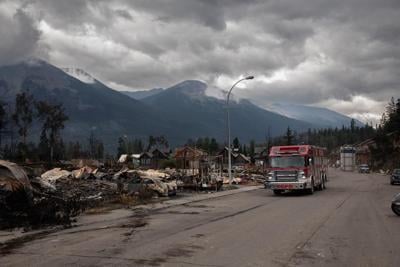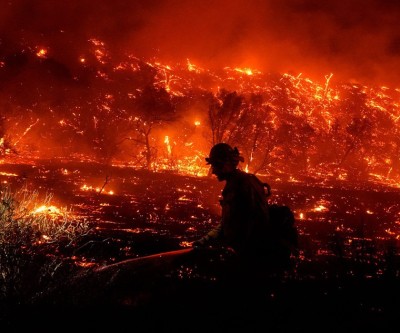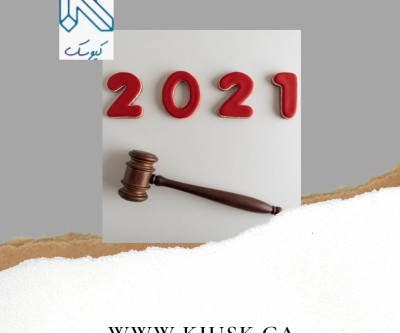Latest News
- Waterloo artist turns Ontario winter into art with backyard snow sculptures
- Third suspect arrested in connection with four murders in Carry the Kettle Nakoda community
- One-fifth of Canadian parents rely on grandparents for vacation expenses
- Former University of Michigan football coach Sharon Moore arrested hours after being fired
- What Canadian Border Security Officers Found in 2025
Latest Ads
-
Jasmine Jewel
Call
-
Omidan group
Call
-
Amir Madanpour
Call
-
Dimo studio
Call
-
Yorkacademy
Call
-
Maryambagheri
Call
-
Shishlix Restaurant
Call

Lease system, building rules in Jasper National Park could hamper wildfire rebuild
Residents own their houses, but the land on which the houses are located does not belong to them
Hundreds of buildings in the community of Jasper were destroyed in a recent fire. Experts warn that rebuilding blighted neighborhoods will be complicated by Parks Canada's property regulations.
Residents of Jasper, Alberta, who lost their homes in a wildfire last month, face unique rebuilding challenges tied to rental regulations almost as old as Canada.
Property owners in Jasper National Park own their buildings, but not the land they sit on, unlike other municipalities, attorney Jessica Reed said.
"The real owner of the land, even if you look at the deed, is the king himself," said Reed, a partner in a law firm with offices in four Rocky Mountain municipalities, including Jasper.
That means every property owner in Jasper, like other communities located within a national park, is a Crown tenant and must make annual payments tied to the value of the property, Reid said.
Canada's National Parks Act also stipulates that leases are usually for a period of 42 years, although some are shorter, and renewals involve renegotiation of the terms of the leases.
Reid said this has already caused headaches for Jasper homeowners, as banks sometimes refuse to issue real estate loans if the existing lease for a property is shorter than the term of the future mortgage.
The problem could get much bigger, he said, as 358 homes and businesses in the town of 5,000 were recently destroyed in a fire.
He worries that the leases could hamper rebuilding efforts and potentially cause financial damage.
Those who don't want to rebuild may also face challenges, Reed said.
He said there have been cases in the past where property owners have received insurance claims after demolishing their homes, instead of choosing to rebuild, but Parks Canada has prohibited them from selling vacant land to a prospective buyer.
"One owner wanted to do a complete purchase and then sell the vacant lot," Reid said. And Parks Canada said, “No, you can't sell a vacant lot. You have to sell a new building.''
"I'm in awe of the fact that people have been talking to their adjusters for weeks and thinking about the value of their purchase and thinking, 'That sounds good,'" Reed said.
Western University historian Alan McEachern said the lease system dates back to the 1880s, shortly after John A. Inspired by the United States, MacDonald, Canada's first Prime Minister, and the federal government created Banff National Park as the country's first national park.
At the time, McEachern said, MacDonald wanted to make sure the leases went to the wealthy so that the buildings in Banff, Alberta, would be as impressive as the views.
McEachern said the government had made many changes to the system over the years, such as extending leases from an initial 21 years to 42 years and introducing renewable leases, but shortly thereafter made them non-renewable again.
McEachern said the result is that tenants feel the government has too much power, while Ottawa worries it has lost too much control.
"Basically, they set up a system in the late 1800s and early 1900s that helped build Banff and other places but didn't satisfy anybody," McEachern said.
Today, Reid said the leases don't necessarily control the day-to-day lives of park residents, but they are "powerful" and frustrating documents.
"At the end of the day, for someone who's actually buying a home, it just feels natural," he said. "There are lawyers who pull our hair."
After the lease issues are resolved, Jasper homeowners must follow two sets of rules to renovate.
The city's land use policy determines what types of buildings can be built and where. And the Parks Canada Building Regulations cover things like acceptable exterior colors and roofing materials.
news source
Suggested Content
Latest Blog
Login first to rate.
Express your opinion
Login first to submit a comment.
No comments yet.


































